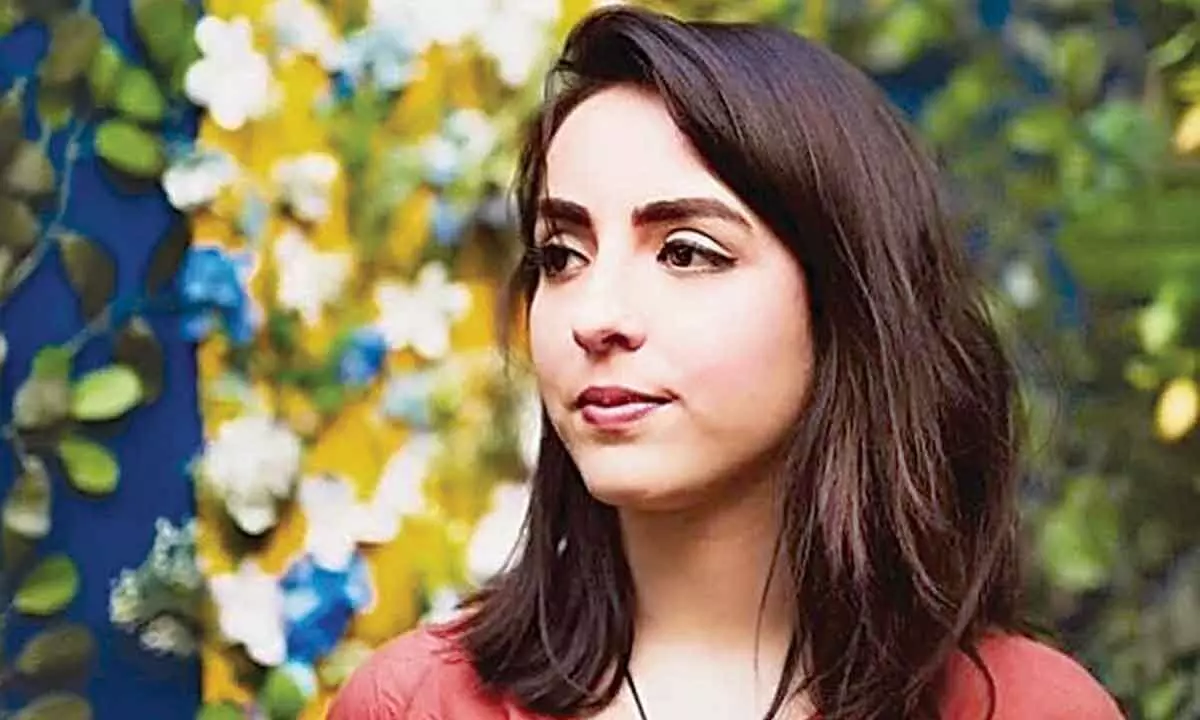Live
- Tanks, canals remain neglected despite execution of MGNREGS works
- BRS to celebrate Deeksha Diwas on Nov 29, Dec 9
- NCC Day grandly celebrated at SITAM
- CITU demands rollback of strategic sale of VSP
- 7-Year-old girl sexually assaulted in Tirupati
- PM Modi highlights govt's efforts to make Odisha prosperous and one of the fastest-growing states
- Hezbollah fires 200 rockets at northern, central Israel, injuring eight
- Allu Arjun's Family Appearance on Unstoppable with NBK Breaks Viewership Records
- Unity of hearts & minds essential for peace & progress, says J&K Lt Governor
- IPL 2025 Auction: I deserve Rs 18 cr price, says Chahal on being acquired by Punjab Kings
Just In
When I look at the foliage of Lahore, I am also looking at that of India: Wardha Shabbir


Wardha Shabbir
It is sad that we are so near yet so far. The strong cultural bond that exists between us, the similarity of language, and even skin tones same.
"It is sad that we are so near yet so far. The strong cultural bond that exists between us, the similarity of language, and even skin tones same. Whenever I look at the foliage of Lahore, the part of my paintings, I am also looking at the foliage of India," says Pakistani artist Wardha Shabbir whose works are part of the exhibition 'The World Awaits You Like a Garden' being shown at Latitude 28 (on till June 30) in the Capital.
This 34-year-old, who has been regularly exhibiting her work in India stresses she has always felt a strong connection between the people of both the countries despite the political differences.
Remembering that art entered her life at an early age when she would see her mother doodle and sketch out motifs on to a piece of paper, fascinating her how she could do that without even looking, the artist recalls, "She was also a gardener, something that interested me too. Eventually, I started making drawings of plants. I was in grade seven, and I used to draw this botanical pattern -- that is still in my paintings, the pattern of leaves that is mostly in the background of my paintings."
Talk to the artist about what fascinates her about miniature art and she says that the word 'miniature' limits the boundaries of what it could be, and would prefer to call what she is looking at visual arts. For her, dwelling on this practice is actually the spiritual relationship that one forms with his/her art. "The relationship that you form with a dot -- you put a dot together with another one that forms pixels of an image and then it comes to be more high resolution. So, I feel a connection to that dot, and when you put that dot on a piece of paper, your mind, body, and soul have to be one and then you put the next one -- leading to a spiritual journey of self-awareness that you are making with miniature paintings. The miniature that I do is mostly mirroring the experiences that I have in my society. Through the language of trees, I am forming those experiences into passages and pathways or survival of women."
Living in Lahore ever since she was a child, Shabbir has seen the city evolve just like her experiences. "I have seen the culture, temperature, and air change. I have many influences from the city in my work. Like the yellow background in my works, the lights are that shade here.
The video work that is part of the exhibition, 'The World Awaits you in the Garden' was inspired by the notion of survival. In that work, I talk about the survival of the women. It was made in response to the unfortunate incident that took place in Lahore where a woman was traveling with her two kids in the middle of the night -- because she was a woman and was alone, she was dragged out and raped in front of her children."
Though the Pandemic was a bleak period, somehow the works she created during that time are colorful. "I started to make these drawings titled 'Khamoshi ke Kinaare' and 'Samundar Ke Khuski' which are sarcastic. Something that is new in my style of art created during that period," concludes Shabbir, who is currently working on a solo show that will be shown in London in September.
Bhavna Kakkar of Latitude 28 adds, "The exploration of dark and insidious imagery underlies all of Shabbir's work. Experiences within her own environment have enabled her to acknowledge laws of dystopia, cruelty, violence, and power that prevail at the most microscopic of levels and in our own social strata."

© 2024 Hyderabad Media House Limited/The Hans India. All rights reserved. Powered by hocalwire.com






